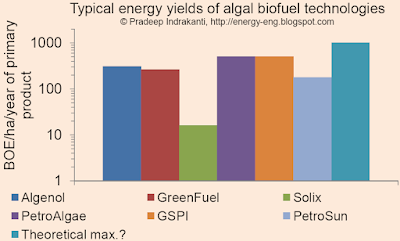Instructions to view the mindmap: This mindmap is hosted on mappio.com. Click on the image below to view the mindmap. You must enable flash for the website to do this. On mappio.com, click on the "View Fullscreen" link to get rid of the ads on the right hand side and view the map. You can zoom by using your middle mouse button, click anywhere on the map to fold and unfold links.
Disclaimer: Mappio.com is a free site to upload and share mindmaps, I am not affiliated with it.
A summary of the mindmap follows:
Approximately ~1.3 T CO2 are produced per T of cement. Globally, the cement industry contributes to 5% of the anthropogenic CO2 emissions (1.34 giga tons of CO2).
Comparisons between cement production and pulverized-coal combustion:
There are some commonalities and contrasts between CO2 emissions from coal-fired power plants and cement plants. Both "commonly" consume coal as a fuel,and flue gas emitted from both processes is relatively dilute in CO2. However, a greater share of CO2 emissions from cement are a result not of coal burning, but due to the calcination of the raw material (calcium carbonate, CaCO3). The operating temperature of a cement kiln affects the quality of the clinker and the cement produced, and therefore controlling it is relatively more complex compared to coal-fired combustion. Additionally, cement production is essentially a hot gas-solid heat exchange process (with simultaneous mass transfer, chemical reaction and material flows) whereas in coal combustion, the objective is to produce a hot flue gas stream to generate steam.
What has the cement industry done to reduce its CO2 emissions?
In cement production (similar to heavy-metal industries such as bauxite and steel) energy efficiency (lower CO2 emissions) directly translate to cost savings. Therefore, the industry has an incentive to maximize the tons of product produced/unit of energy spent. Innovations in kiln design (preheaters, precalciners) as well as a move away from wet process kiln technology have resulted in considerable energy savings. Because a greater portion of the CO2 emissions from cement plants are from the raw material calcination itself, any process that requires lesser raw material to be calcined significantly reduces the CO2 emissions from (and energy requirements of) cement production. Examples of this are blending pozzolonas (fly ash) to cement and blending ground limestone into cement. The ASTM standard limits fly ash blending at 25% w/w in cement for reinforced cement concrete applications, whereas the relevant standard for limestone currently allows 5% blending. Because both of them displace an equivalent amount of clinker, blending limestone or fly ash results in reduction of CO2 emissions and is also very cost-effective. However, recent NOx regulations have forced powerplants to reduce flame combustion temperatures to avoid high-temperature NOx, and this results in residual carbon in flyash. High-carbon fly ash is not suited to be blended into Portland cement. Fly ash blending gives durability to cement. Overall, in my opinion, cement manufacture is a nice example for industrial ecology, because fly ash (a byproduct of coal combustion) and gypsum (a by-product of phosphoric acid manufacture) are used to make cement, which in turn is used to make concrete.
What can the industry do in the near future?
A few of the many innovations in reducing GHG emissions from cement production include:
From a general perspective, the process of precipitating calcium carbonate from CO2-saturated solutions requires high-pH conditions. This scenario is a catch-22 situation, because increased CO2 concentrations in water (under high pressures) which is essential for precipitating CaCO3 (for example), also results in decreased pH, which disfavors carbonate precipitation. On the other hand, many marine organisms such as corals, mollusks and algae form CaCO3 either within their bodies or externally, under relatively dilute-calcium concentrations. Some alkaline materials that could be added to water to increase its pH economically are: alkaline fly ashes, and cement kiln dust.
Another example of a company involved in making carbonates is Carbon Sense Solutions Their process involves accelerated CO2-curing of concrete, which is essentially a reverse of the calcination step. I partly commented on this process on the peakoil forum At best, thsi process would make concrete (and cement production) carbon-neutral. However, getting a CO2-source close to the curing plant would require additional infrastructure to transport CO2. Compared to this, the use of external cations (either from sea water (Calera) or an added alkaline material) has the potential to result in a net-reduction of CO2 emissions
Summary and Outlook:
In the short-term, processes which utilize CO2 would provide low-cost CO2 offsets to cement producers, whereas the long-term approach likely involves developing the infrastructure for low-cost carbon capture and storage (CCS).






